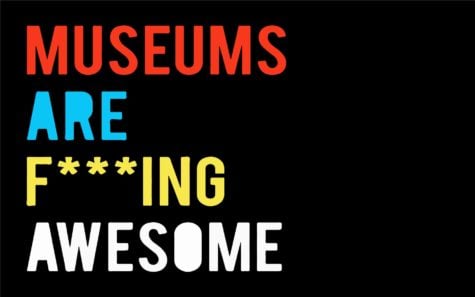
Most Americans know three things about John Hancock: he was the first signer of the Declaration of Independence, he signed his name really big on said declaration, and his signature is now so famous that we call signatures “John Hancocks” in American English.
It’s three more things than I’m famous for, but I can’t help but think our collective knowledge of John Hancock could use a little more padding. Don’t get me wrong—it’s a fine signature. But, you know, what else about the guy?
Hancock was important enough to change history by writing his name, so let’s stop short-shrifting him with stories about his calligraphy and get to the core of who John Hancock really was: a wealthy fortified-wine smuggler who could’ve rested on his laurels, but instead risked everything for a life of politics and radical opposition to the Brits.
John Hancock: Early Years
John Hancock was born to Mary Hawke and John senior in Braintree, Massachusetts, in 1737. John senior was a clergyman, and he died when John Jr. was still a kid. After that rough bit of fate, Mary took John and his siblings to live with her in-laws in Lexington.
John’s luck changed, though. His uncle, Thomas Hancock, owned a very successful shipping business in Boston, and he and his wife, Lydia, had no kids of their own. Mary sent John to live with his aunt and uncle, and the couple ended up adopting John.
The sweet thing about becoming the only son of a super wealthy merchant was that it meant John would also get to be a super wealthy merchant. It also meant that, when John graduated from Harvard in 1754, he probably didn’t have any loans to pay off.
After graduation, John got to work with his uncle, which he did for the next decade. In 1764, his uncle died and John took over the family estate and business. Suddenly, John Hancock was one of the richest men in New England.
New England culture has long been underpinned by a sort of Protestant work ethic—a traditional repressed spartanism that rejects excess. That wasn’t John. John had money and he spent it, gaining a reputation and criticism for his extravagance in the process. 1
John Hancock, or Die.
Making money from moving ships around might have been Thomas Hancock’s passion, but it wasn’t John’s. Fortunately, his prominence provided him with a springboard into something that did drive him: politics. Shortly after taking over his uncle’s mercantile business in the mid-1760s, John won two consecutive public offices. The first was a position in local Boston politics, but the second was with the colonial legislature. 2
This is the same decade that saw rising tensions between the colonists in America and Parliament back in London. The Stamp Act of 1765, for example, saw Parliament hitting colonists with taxes on legally recognized documents, newspapers, cards, pamphlets, etc. 3
Then you had the Townshend Acts of 1767, which was a bunch of guff about taxation, exacting duties on imports, and basically eroding colonial self-governance in favor of tighter Parliamentary control. For a lot of colonials, these acts were total balls, and there was a lot of backlash ranging from resistance of the new laws and verbal agitation, to outright violence. I will note here that, as a 21st-century Boston resident, I can attest that “verbal agitation” and “outright violence” are still beloved traditions throughout the city’s greater metro area. 4
As a major politician and as the owner of Boston’s leading shipping firm, John Hancock was in a unique position to be a leader on the issue of import and export duties levied on the colonies. Here’s where you might think that John, a member of Boston’s elite, would side with the loyalists. The status quo had treated him well, and revolutions offer far more risk than reward to those already at the top of society. 5
But Hancock wasn’t the only man of privilege to side with the colonies—throw a piece of gum at a print of the Declaration of Independence, and chances are it’ll stick to the signature of a wealthy landowning dude. (Chances are also that it’ll hit “John Hancock,” since that signature was the biggest.) Colonial grievances against Parliamentary acts came from all levels of society, and these latest measures were hitting everyone’s wallets in the colonies.
Perhaps the most radicalizing moment for John was when the Board of Customs Commissioners started f**king directly with his money when they confiscated his ship, the Liberty, under the suspicion that Hancock had been using it to smuggle Madeira wine (a fortified wine from Portugal).
And, yeah, sure, Hancock probably totally did do that, but so did loads of other people, and a few thousand Bostonians didn’t care that Hancock was likely guilty. They took to the streets, attacked the homes of the commissioners, beat the sh*t out of a customs inspector, and lit a commissioner’s boat on fire in front of John’s house. Hancock, I imagine, appreciated the show of support, but would have preferred not to have a boat fire in his front yard.
Luckily for Hancock, he was defended in court by John Adams, AKA the founding father who would later become a vice president and a president, and who seems to have worked for every high-profile defendant in colonial Boston. With their John powers combined, Hancock and Adams beat the charges, using the argument that paying wine duties was unconstitutional in the first place, as it represented a tax levied without consent. I don’t know how that works, exactly—I don’t think I’ve ever consented to being taxed, but I do sign a lot of things without reading them first. 6
John Hancock’s Ascension as a Founding Father, and that Signature
The Boston Massacre happened shortly after, on March 5, 1770. British-colonial relations were at peak hostility. Fortunately, this was the very same day that the British finally relented and lifted revenue duties on all goods (except tea). The lid was off the pressure cooker, and things got better for a little while, though it wouldn’t last. 7
Hancock spent the next few years increasing his commitment to the radical opposition scene in Boston despite receiving some favors from the Boston governor, including an appointment to his council and a militia promotion. In March of 1774, Hancock solidified his revolutionary street cred by delivering a speech for the Boston Massacre’s fourth anniversary. Among Hancock’s words that day: “The troops of George the third have crossed the Atlantic, not to engage an enemy, but to assist a band of traitors in trampling on the rights and liberties of his most loyal subjects; those rights and liberties, which, as a father, he ought ever to regard, and as a king, he is bound in honour to defend from violation, even at the risk of his own life.” 8 Shots fired.
His words were met with colonial praise. That September, Hancock presided over a Provincial Congress that met without the permission of Massachusetts’ military governor, Major General Thomas Gage. The Congress warned Gage that he was leading everyone down a path to civil war, and demanded concessions that would put more power back in the hands of local authorities, rather than representatives of the crown.
Suffice to say, Britain’s attorney general and solicitor general found Hancock, Samuel Adams, and a few others chargeable with high treason. 9 Hancock and Adams were hunted by Major General Gage. Remember the old story of Paul Revere’s famous night ride? That was to warn Hancock and Adams, who fled Lexington to avoid capture, and traveled to Philadelphia. 10
The second Continental Congress met the following year, in 1775. Hancock’s role was as the leader of the Massachusetts delegate to the second Continental Congress. This was the meeting where George Washington was tapped as the leader of the Continental Army. Hancock, meanwhile, was picked to be congress president. It was a figurehead position, with Hancock’s more tangible contributions to the upcoming war effort consisting of financial support.
On top of all that, John Hancock had to plan a wedding that year! He married Dorothy Quincy, who also came from a well-to-do merchant family. This was good, since Hancock’s own wealth had taken a sizable hit since he started being a rabble rouser. A cash influx was important, since Hancock needed to finance the revolution if he wanted to realize his political ambitions (and not be executed for high treason). Also, love, I guess? He and Dorothy probably loved each other. 11
And that brings us to 1776. Specifically, July 4, 1776. On that day, John Hancock became the first representative to sign the Declaration of Independence. By doing so, he endorsed the proclamation that the 13 American states were no longer under British rule. He also effectively signed his own death warrant, but let’s be honest: the British already wanted him dead, so whatever. They can’t kill ya twice.
Hancock wasn’t just a paper signer, either. He got his hands dirty during the war effort, working with the French navy to lead a military campaign to recapture Newport, Rhode Island, from the British. It, ah, didn’t work out, but I guess that’s why his signature is the main thing we remember about Hancock, and not his glorious liberation of Newport from tyranny. 12
John Hancock as Governor of Massachusetts
You probably know the rest of the story, more or less: The American states won the revolutionary war (thanks for the help, France!), and it is now a considerably larger country. There don’t seem to be any lasting hard feelings, either—we’re pretty tight with the British again, and we’re oddly fascinated by the British royal family for a country founded on the idea of not having to pay attention to them.
As for John Hancock, this was a nice outcome. Not only was he not executed for treason by the British, but he became the first governor of Massachusetts. He won the office in 1780, and held it until he resigned in 1785, due to poor health. Two years later, he was back in action and was reelected in 1787. He kept on governing Massachusetts until he died in October 1793. 13
The interesting thing about his tenure as governor is that it was marred by protests over high government taxation and state regulations. It just goes to show you, you either die fighting the guy who taxes everybody, or you live long enough to become the guy who taxes everybody.
- Biography.com. (Accessed June 19, 2018). John Hancock Biography. Retrieved from https://www.biography.com/people/john-hancock-9327271
- The American Revolution. (Accessed June 20, 2018). John Hancock (1737-1793). Retrieved from http://www.ouramericanrevolution.org/index.cfm/people/view/pp0006
- Encyclopaedia Britannica. (Accessed June 20, 2018). Stamp Act, Great Britain [1765]. Retrieved from https://www.britannica.com/event/Stamp-Act-Great-Britain-1765
- Encyclopaedia Britannica. (Accessed June 20, 2018). Townshend Acts, Great Britain [1767]. Retrieved from https://www.britannica.com/event/Townshend-Acts
- The American Revolution. (Accessed June 20, 2018). John Hancock (1737-1793). Retrieved from http://www.ouramericanrevolution.org/index.cfm/people/view/pp0006
- The American Revolution. (Accessed June 20, 2018). John Hancock (1737-1793). Retrieved from http://www.ouramericanrevolution.org/index.cfm/people/view/pp0006
- Encyclopaedia Britannica. (Accessed June 20, 2018). Townshend Acts, Great Britain [1767]. Retrieved from https://www.britannica.com/event/Townshend-Acts
- The American Revolution. (Accessed June 20, 2018). John Hancock (1737-1793). Retrieved from http://www.ouramericanrevolution.org/index.cfm/people/view/pp0006
- The American Revolution. (Accessed June 20, 2018). John Hancock (1737-1793). Retrieved from http://www.ouramericanrevolution.org/index.cfm/people/view/pp0006
- Biography.com. (Accessed June 19, 2018). John Hancock Biography. Retrieved from https://www.biography.com/people/john-hancock-9327271
- Biography.com. (Accessed June 19, 2018). John Hancock Biography. Retrieved from https://www.biography.com/people/john-hancock-9327271
- Biography.com. (Accessed June 19, 2018). John Hancock Biography. Retrieved from https://www.biography.com/people/john-hancock-9327271
- Biography.com. (Accessed June 19, 2018). John Hancock Biography. Retrieved from https://www.biography.com/people/john-hancock-9327271

